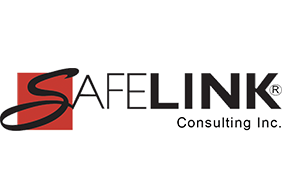The hand, with its intricate structure of bones, muscles, tendons, and ligaments, is a crucial component in performing a wide range of tasks. Not only is healthy hand function important for employees, but it also greatly impacts employers who rely on their workers' productivity and well-being. Sadly, hand injuries are all too common among workers worldwide. From cuts and needlesticks to crushed bones and burned skin, the dental industry is no stranger to these types of accidents. However, with proper personal protection, knowledge, and training, hand injuries can be prevented.
The OSHA standard that specifically deals with hand protection and personal protective equipment (PPE) can be found in 29 CFR 1910.138 - Hand Protection. This standard outlines the requirements for employers to carefully choose and provide the appropriate hand protection for employees who may be exposed to potential hand injuries. Additionally, OSHA's Bloodborne Pathogens Standard and the CDC's infection control guidelines stress the importance of using gloves as part of standard precautions to prevent the transmission of infectious agents. These guidelines emphasize the need for gloves when handling blood, saliva, or other potentially infectious materials, as well as when performing tasks that may lead to hand contamination.
It's important to remember that not all gloves are created equal. There are a variety of gloves available and designed to keep you safe and protected no matter the task at hand (pun intended). When selecting gloves, it's important to consider the specific hazards present. Employers must select and provide employees with hand protection that is suitable for the specific workplace hazards and tasks.
Choosing the right gloves for the task!
To safeguard against the spread of contagious diseases transmitted through blood and bodily fluids, dental workers, including dental lab workers, depend on the use of gloves during any procedure or treatment involving direct contact with blood, saliva, or potentially infectious materials. Disposable gloves are a crucial protective measure in the dental industry. Rubber latex, nitrile, and vinyl gloves are the most common types of disposable gloves. It's worth noting that the US Food and Drug Administration (FDA) regulates gloves as medical devices. Therefore, only gloves that are FDA-cleared should be used for patient treatment.
Nitrile Gloves: Nitrile gloves are a popular choice because they offer excellent chemical resistance, including resistance to many common chemicals and disinfectants found in the dental industry. They are also latex-free, making them suitable for individuals with latex allergies.
Latex Gloves: Latex gloves provide good dexterity and sensitivity, which can be important for performing precise tasks. However, some individuals may have latex allergies, so alternative options should be available for those individuals.
Vinyl Gloves: Vinyl gloves are another option for general tasks. They are latex-free and provide good barrier protection, though they may not offer the same level of dexterity as nitrile or latex gloves.
Sterile Surgical Gloves: Surgical gloves are individually packaged sterile gloves and must be used for all oral surgical procedures.
Disposable gloves serve as a vital shield, providing an indispensable layer of defense against the transmission of infectious agents that can occur when exposed to blood, bloody saliva, contaminated objects, and surfaces. However, it is crucial to emphasize that wearing gloves should never be a substitute for proper hand hygiene and thorough handwashing practices. Learn more about proper removal of PPE for infection control.
Heavy-Duty Utility Gloves:
Heavy-duty utility gloves are a crucial yet often overlooked form of personal protective equipment (PPE). While they are not designed for direct patient care, both OSHA and the CDC recommend wearing chemical- and puncture-resistant utility gloves when handling contaminated instruments, performing housekeeping duties like cleaning and disinfecting, and engaging in tasks involving chemicals. These heavy-duty gloves provide significant protection against both puncture injuries and chemical exposure. Typically made of nitrile or neoprene, they should be properly washed and disinfected after each use. Some types may even be heat sterilized, as indicated in the manufacturer's instructions. It's important to note that heavy-duty utility gloves are not classified as medical devices, and therefore, the FDA does not regulate their manufacturing standards. Workers should always have their own pair of well-fitting utility gloves on hand.
Safety Data Sheets (SDSs) serve as valuable resources for identifying the appropriate gloves to wear when working with specific chemicals. The "Section 8 - Exposure Controls/Personal Protection" of the SDS provides guidance on the recommended glove material, breakthrough time, permeation rate, and other relevant personal protective equipment.
Heat Resistant Gloves:
Heat-resistant gloves are designed to provide thermal protection and are made from materials such as leather, neoprene, Kevlar, or other insulating fabrics that can withstand high temperatures. When choosing heat resistant gloves, it is important to consider the specific temperature range that they can withstand. Different procedures may require gloves with varying levels of heat resistance and materials. For instance, gloves used for welding and lasers may be different than gloves used around steam or hot water.
To effectively safeguard against steam and splashes, it is essential for gloves to extend up the arm when working with boiling hot water, such as a boil-out unit. The specific length of the gloves required will vary depending on the nature of the work and the potential hazards involved. In some cases, mid-forearm gloves may provide sufficient coverage, while in others, longer gloves that extend past the elbow may be necessary to ensure optimal protection. The main objective is to minimize the risk of hot water or steam coming into contact with the skin, so consider the specific tasks being performed and select gloves that offer appropriate coverage for safeguarding the hands and lower arms against burns and other heat-related injuries.
Heat resistant gloves should be properly maintained and inspected regularly to ensure their effectiveness. Any signs of wear or damage should be addressed immediately, and the gloves should be replaced if necessary.
Training is a must!
Merely having gloves available is not enough. Employees must know when and how to use gloves in order to protect themselves. Employers are responsible for training workers on how to safely wear gloves as part of their overall workplace safety and health program. Proper training on the use of gloves is essential to ensure that employees understand how to effectively use and maintain their hand protection, thereby minimizing the risk of injury or exposure to hazards.
Key aspects of training on wearing gloves safely may include:
1. Selection and fit: Employees should be trained on how to select gloves that are appropriate for the specific hazards they may encounter in their work. This includes understanding the different types of gloves available and choosing the right size and fit for optimal protection and dexterity.
2. Proper donning and doffing: Workers should be instructed on the correct techniques for putting on (donning) and removing (doffing) gloves to prevent contamination and potential exposure to hazardous materials.
3. Limitations and inspection: Training should cover the limitations of gloves in providing protection, as well as how to inspect gloves for damage or wear and when to replace them.
4. Hand hygiene: Employees should be educated on the importance of maintaining good hand hygiene practices while wearing gloves, such as washing hands before and after glove use, and avoiding cross-contamination.
5. Storage and maintenance: Proper storage and care of gloves, including cleaning and maintenance, should be included in the training to ensure that gloves remain effective and in good condition.
By providing comprehensive training on the safe use of gloves, employers can empower their workers to effectively protect themselves from workplace hazards while promoting a culture of safety and compliance with regulatory requirements.
Let's sum it up!
By following the guidelines provided by regulatory agencies, understanding the different glove types, and using the information available in Safety Data Sheets, employers can make informed decisions about glove selection and usage. Working together, we can reduce the number of work-related hand injuries and create a safer work environment for everyone. Get help with health and safety training.
Keep Calm and Scrub On: The Importance of Hand Hygiene in Dentistry
Learn more about hearing protection in dentistry and eye protection for the dental practice or laboratory.
How Workplace Safety Training Can Save Your Business Time & Money
Learn more about what SafeLink Consulting can do to help your business with compliance services, including safety compliance, to meet OSHA training requirements and quality system consulting to meet FDA compliance. Contact us for an OSHA consultation. Learn more about Dental OSHA Compliance.






